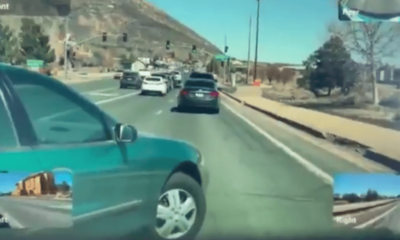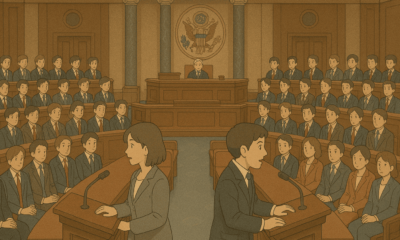2024 election
Political Attack Ads: Are They Backfiring on Candidates?

As the 2024 election season heats up, Pennsylvania residents are grappling with an unprecedented surge of political attack ads. The anticipated national expenditure on these ads is projected to reach approximately $10.7 billion, heavily concentrated in battleground states.
With Labor Day approaching, over $1.7 billion in political ad reservations has already been recorded nationwide, particularly alarming for viewers seeking a peaceful streaming experience. Notably, $400 million of this total is earmarked specifically for presidential campaign ads across seven crucial battleground states.
Pennsylvania remains the focal point in this political landscape, with a staggering $137 million allocated to presidential ad reservations. The Philadelphia market particularly stands out, capturing over $125 million, marking it as the highest in the nation. In this competitive space, Democratic candidates are outspending Republicans by about 25% in the Philadelphia area.
The proliferation of political ads raises pressing questions about their effectiveness. Research indicates that, contrary to popular belief, the barrage of negative ads often fails to sway voters, particularly the undecided. In fact, excessive exposure to such ads can backfire, creating feelings of resentment and prompting voters to turn against the candidates behind these messages.
Evidence from a recent Pew Research Center survey reveals that 65% of Americans frequently feel exhausted or angry when confronted with the current political climate. This emotional toll further complicates voter engagement, as heightened stress and anxiety can lead to reduced turnout among those less invested in the political process.
The evolution of political advertising is not a new phenomenon. While once viewed as a tool for voter education, the landscape shifted dramatically following the infamous “Daisy” ad of 1964, which highlighted fears of nuclear war without directly naming the opposing candidate, Arizona Senator Barry Goldwater. This marked the beginning of a significant era of attack advertising in U.S. politics.
The 2010 Supreme Court ruling in Citizens United unleashed a wave of funding from corporations and outside groups, forever altering the campaign finance landscape. Previous restrictions on campaign donations were lifted, leading to a substantial rise in political ad spending. By 2020, this amount soared to $9 billion, underscoring the shift toward negative and misleading advertising strategies.
Negative ads dominate the current political climate, as evidenced by a 2020 Pew Research study. Following President Biden’s exit from the race, a striking 95% of pro-Trump ads focused on attacking Vice President Kamala Harris rather than promoting policies. This negative messaging strategy preys on America’s deeply divided electorate, fueling mistrust in media and political figures.
Moreover, the rise of microtargeting techniques—using data analytics to tailored messages for individual voters—has sparked further discontent. Many voters are uneasy about the invasion of privacy that accompanies such targeted advertising. A Pew survey found a significant portion of the electorate opposes the use of personal data for political ad targeting.
The impact of this deluge of ads remains to be seen. With the political landscape remaining highly polarized, the effectiveness of these aggressive strategies is increasingly called into question. As negativity permeates the electoral process, the evidence suggests it may not only fail to convince but also erode trust in democracy.










![Patrick James Stahoviak, 60, was arrested in Maricopa March 19. [Pinal County Sheriff's Office]](https://arizonanews.org/wp-content/uploads/2025/03/Ex-Cocaine-Dealers-Shocking-Attack-on-Nephew-Leaves-Toothless-Authorities-Investigate-400x240.png)
![Patrick James Stahoviak, 60, was arrested in Maricopa March 19. [Pinal County Sheriff's Office]](https://arizonanews.org/wp-content/uploads/2025/03/Ex-Cocaine-Dealers-Shocking-Attack-on-Nephew-Leaves-Toothless-Authorities-Investigate-80x80.png)






